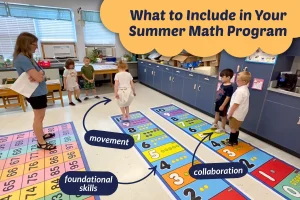
- Trusted by Over 2000 Schools Nationwide
- Top-Rated PD Provider ★★★★★ 4.77
- Save with our Kits & Packages – Shop Now! →
In the traditional classroom setting, students are often confined to their desks for extended periods, leading to sedentary behavior that can negatively impact both their physical health and academic performance. However, there is a growing recognition of the benefits of movement-based learning, which incorporates physical activity into the educational process. To successfully implement this approach, it is crucial to empower teachers with the necessary professional development and training. In this blog post, we will explore the importance of empowering teachers and provide insights into how professional development can support the integration of movement into the classroom.
Before diving into the training aspect, it’s essential to highlight the benefits of movement-based learning. Research has shown that physical activity stimulates brain function, improves memory retention, enhances focus and attention, and boosts overall academic performance. By integrating movement into their teaching practices, teachers can create a dynamic and engaging learning environment that caters to the diverse needs of students.
Professional development plays a pivotal role in empowering teachers to integrate movement effectively. It provides educators with the necessary knowledge, skills, and strategies to implement movement-based learning programs in their classrooms. Through professional development opportunities, teachers can stay updated on the latest research, best practices, and instructional techniques related to movement and learning.
When designing professional development programs for teachers, it is essential to consider their specific needs and circumstances. Here are some key elements to consider:
a. Knowledge Foundation: Professional development should provide teachers with a solid understanding of the science behind movement-based learning, including its benefits and the research supporting it.
b. Practical Strategies and Activities: Teachers need access to a repertoire of practical strategies and activities that can be seamlessly integrated into their existing curriculum. These can include brain breaks, active lessons, outdoor learning experiences, and incorporating technology for movement-based activities.
c. Classroom Management Techniques: Teachers should be equipped with effective classroom management techniques that promote a safe and supportive learning environment during movement-based activities. This includes establishing clear expectations, managing transitions, and ensuring student participation and safety.
d. Collaboration and Sharing: Encouraging collaboration and sharing among teachers is crucial for a sustainable implementation of movement-based learning. Professional development programs can facilitate networking opportunities, workshops, and online communities where teachers can exchange ideas, success stories, and challenges.
Empowering teachers goes beyond a one-time professional development session. Providing ongoing support and follow-up is crucial for sustained implementation. This can be achieved through mentoring programs, coaching sessions, and periodic check-ins to address challenges, share experiences, and provide additional resources and guidance.
Conclusion
Empowering teachers to integrate movement into their classrooms through professional development and training is a key step toward enhancing student engagement, academic performance, and overall well-being. By equipping teachers with the necessary knowledge, skills, and support, schools can create a culture of movement-based learning that promotes a dynamic and inclusive educational environment. Through the dedication and expertise of teachers, we can unlock the full potential of movement-based learning and create transformative educational experiences for our students.
Movement isn't just for recess
Want to get started with movement-based learning right now? Enter your email to get our training manual with over 250 active math movements. No materials necessary!




Subscribe to Our Newsletter
We never share or sell your data.
Please leave your email and a quick note for us. We will get back to you soon! In the meantime, here are answers to some of our most common questions:

Enter your email to get our training manual with over 250 active math movements. No materials necessary!
We never share or sell your data.